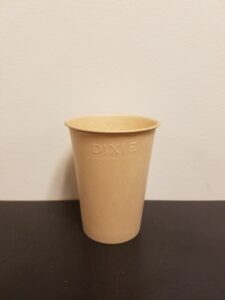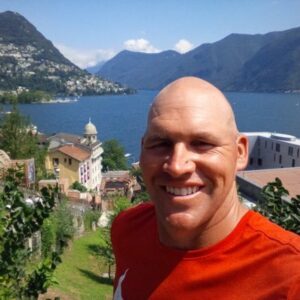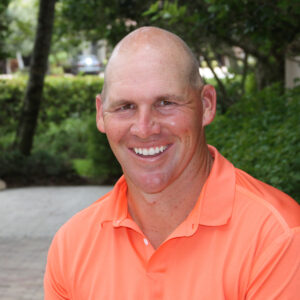They idea of IMP-attitude originally came from a trip I (Izo) had to Turkey a tournament. I was in the hotel room watching a commercial and I saw the word impossible on the screen and I see the letter being lowered and it hits me “I’m possible”.
I was thinking: “OK, this is how I can make aha-moment with my players” Because once you change the way you see the things, things you see change. That’s for me super important because I believe tennis is a problem-solving sport. Every moment you need to solve a certain problem.
For me it’s about how you see a problem as an opportunity and how you see failing as learning. So, For me, successful people have ability to move from a fixed mindset to the growth mindset, and that’s with their attitude.
What defines you is not what you want to be. It’s your protocols and your systems. You fall down to your protocols and the system that you do daily. So, I broke down these 4 habits.
Habit 1 – Setting goals
All successful people set goals. To put it in the perspective of tennis I (Izo) would like to know how clear you are about your goals? Because clarity is power, you need to be very clear about your goals. It cannot be a little bit of this and a little bit of that you need to put down on a piece of paper, the things that you want to do.
If you want to achieve those goals, then you need to have a strong why. Your why needs to be very strong, because once you meet obstacles, if you don’t have the strong reason, of why you play tennis or why you want to achieve that goal – you’re going to give up.
The third part of setting goals is that you start from the end. So, you start from who you want to be as a tennis player. What does the greatest version or the grand slam championship version of you look like? Where is that version emotionally, tactically, strategically, technically?
From there you break it down to the first step. From where you’re at and where you want to be, the space in between is a gap. If you do not close that gap, if you don’t bring that goal right outside of your reach, you’re going to create anxiety, you’re going to create a failure. That’s why people give up on their goals. Once you have that first goal, you go to the second habit.
Habit 2 – Take massive action
Not any kind of action. You need to take massive action. What I tell players, you have 24 hours in the day. What do you do with those 24 hours is what are you going to be in the course of a week, month, a year, a lifetime. So, what is massive action? You might be spending 2 hours on court, 1 hour in gym, but it’s not only about that time. It’s about what do you read? What do you feed your brain? What do you drink? Do you stretch?
A reason why people fail is because some day is now, so don’t try to take action tomorrow. For me, this interview with you, we could do it in a week or two weeks or not, but I really want to do it right now. Maybe I’m (Izo) not going to do the best interview or the most professional, but this is my opportunity. So, some day is now. My (Izo) golden rule for success is try fail learn, try, succeed. That’s it. It’s as simple as that. Don’t invent the hot water. If you want to run a marathon, put the shoes on and you run. Probably you can run only 10 minutes right now. That’s it. Next goal is 11 minutes. While you’re failing to do a marathon, you can learn what you need to do in nutrition. I need better shoes. I need to do this. I need to do that. So, for me it’s try, fail, learn, try, succeed.
On the tour I saw these tennis coaches and what I really believe they do great. They make simple better. There is no complexity to it.
Habit 3 – The power of Choice
Between stimulus and response, there is a space called choice. That’s a golden ticket of your life because that’s is making a decision where your life is going. In tennis between losing a point and your next point, you have 20 seconds of choice. What do you do in those 20 seconds is the most important thing. We need to practice that. Practice how you talk because what you vocalize, it’s so important. Do you have a problem or do you have an opportunity? That’s a different take. People ask me what is the opportunity in the problem? I tell them the opportunity in the problem is who you can become to solve that problem. That’s your opportunity. What kind of player, what kind of person do you need to be to solve that problem? That’s your opportunity, my friend.
There is no failing. There’s only learning. And once you see that you realize: “Wow, I’m not a failure.”
You get to a point where opinions of others don’t become your reality. That’s a curse in our society because we think so much about others that we forget to think of who we want to be. That can become a big, big problem, especially for the young minds in tennis. That’s why I want to develop the attitude in the players before anything else, because once you have the right attitude, once you have a right mindset, then we can talk about your technique, then we can go into your footwork. Then we can talk about setting challenges in practice. But before that, before we go into anything, we need to talk about your mindset, and that’s where we come to the 4th habit.
Habit 4 – Willpower
Willpower is small daily disciplines over a period of time. That’s what success is. Successful people protect their time and their habits. They know that how they start and end their day is going to decide a lot of the outcome of the day.
Those are the 4 habits, goals, action, power of choice and willpower.
Once you acquired them in a simple manner, you have what I call IMP-attitude. You don’t need any guru. I’m tired of people charging a lot of money because to be successful is actually very simple. It’s simple and once you dive in with your pure desire and passion, you know what? You’re going to attract the people who will help you, who will take you to another level because they’re going see, “Oh, wow, look at this boy. He’s on the on the wall hitting ball day in and day out. I really want to go and talk to him and see how I can help him”. We naturally get attracted by great attitude.


